Wednesday Excursion to Bryce Canyon
Purpose: To model an active learning session connecting participants to a place, Bryce Canyon, to understand or develop a personal land ethic. One can visit a national park as a tourist or as a learner engaged in acts of civic engagement. Today we encourage you to be a learner. According to the Aldo Leopold Foundation’s Land Ethic Leaders Handbook, civic engagement is “based on combining knowledge and action - gathering reliable information or data about the world around you and making decisions to act based on it.” Through observing, participating, and reflecting on a shared experience, in one of our nation's parks, we hope you leave knowing Bryce Canyon and your environmental values at a deeper level.
On the excursion, participants will be able to:
- Use Bryce Canyon’s fundamental significance statements as a guide to explore the park through observations
- Differentiate Bryce Canyon from other public lands
- Connect to Bryce Canyon as a learner through civic actions
- Consider one’s own environmental values and compare their values to others in a respectful manner
Bryce Canyon Excursion Itinerary
9:00am - 10:30am: Active Learning Session
Significant learning experiences can lead to a mountain of possibilities, yet they begin with intention and end with celebration and reflection. Today we would like to invite you to explore Bryce Canyon, not as a visitor, but as a learner connecting to a place through civic actions. We invite you to enter into a landscape and through observations gaining an understanding of Bryce Canyon and what makes it unique, but also considering the environmental values you hold as you explore and investigate Bryce Canyon’s fundamental resources.
In the morning session, we will dive into intention and reflection as the two anchor points for experiential learning. From this review we will prepare you to visit Bryce Canyon as a learner connecting to a place through civic actions.
At the end of the morning session participants will be able to:
- Consider NSEE’s NSEE’s 8 Standards of Good Practice in relation to an outdoor learning excursion
- Contemplate the role of intention in experiential education
- Articulate your personal environmental ethic and apply it as a tool for observation throughout the day
- Write a reflective question to guide your excursion
Please begin by reviewing Bryce Canyon’s Foundation Document.
10:45am: Load Busses
12:30pm: Arrive in Bryce Canyon at the Visitor’s Center
1:00pm: Divide into Excursion Groups
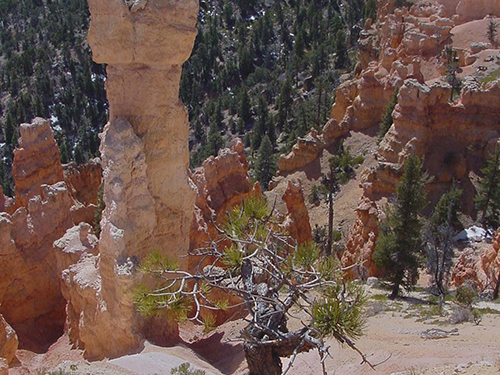
Structural Geology and Hoodoo Formation on the Fairyland Loop
This Excursion is Full.
- Capacity: 15 participants
- Time: 1pm-6pm
- Leaders: Johnny MacLean and Jayci Bash
Very strenuous hike: 8 miles, losing and gaining 2,039 feet; Map. Learn about Bryce Canyon’s amazing geologic history.
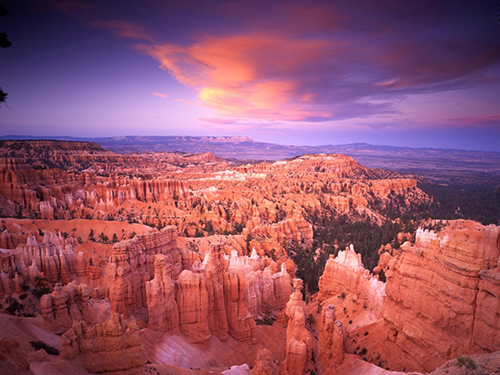
Learning in Parks Rim Exploration
- Capacity: N/A
- Time: 1pm-6pm
- Leader: Todd Petersen
An introduction to Bryce and how to approach learning in parks. Will hike from Sunset to Sunrise Point.
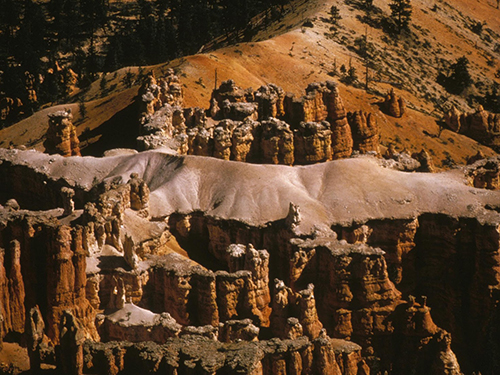
Visitor Experiences and the Peekaboo Loop
- Capacity: 11 participants
- Time: 1pm-5pm
- Leader: TBA
The NPS is protective and intentional about visitor experiences. Consider the value of different experiences by hiking the 5.5 mile Peekaboo Loop Trail. Trail loses and gains 1,555 feet.
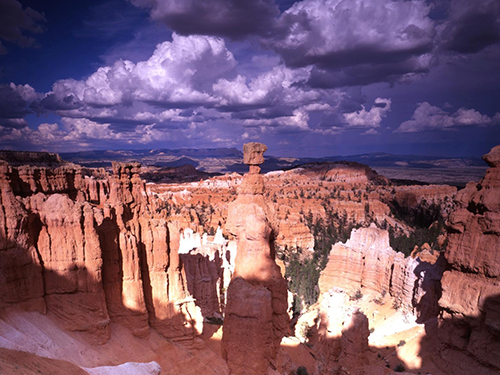
Navajo Loop
- Capacity: 12 participants at each departure time
- Time: 1pm-3pm & 3pm-5pm
- Leader: TBA
The NPS is protective and intentional about visitor experiences. Consider the value of different experiences by hiking the 1.5 mile iconic Navajo Loop Trail. Trail loses and gains 555 feet.
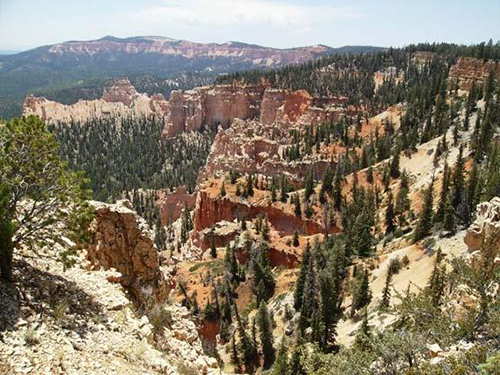
Foundation Scavenger Hunt
- Capacity: N/A
- Time: 1pm-6pm
- Leader: Kay'ce Hofheins
Some experiences are better at your own pace with some time for a self-guided adventure. This excursion option will guide you through exploring Bryce’s Foundations, but on your own instead of a group.
6:00pm: Dinner on the Rim
8:30pm: Return to Cedar City
Excursion Group RSVP Form
Getting to Know Bryce Canyon
Each national park has a Foundation Document declaring its purpose (as designated by its creation legislation) followed by significance statements highlighting what makes each park unique as a national treasure. Below are Bryce Canyon’s purpose and significant statements:
Bryce Canyon National Park protects and conserves resources integral to a landscape of unusual scenic beauty exemplified by highly colored and fantastically eroded geological features, including rock fins and spires, for the benefit and enjoyment of the people.
- Bryce Canyon National Park showcases one of the largest and most colorful concentrations of erosional geologic features in the world, including hoodoos, fins, windows, fluted cliffs, bridges, arches, and grottoes. This unusual landscape within the Claron Formation is created by a unique combination of natural processes, location, rock properties, and climate.
- The location of the park at the summit of the Grand Staircase, surrounded by a system of nationally protected lands, and combined with the exceptional clarity of the air and natural quiet, provides a multisensory experience. The outstanding views often extend more than 100 miles and begin with the colorful and intricately carved Claron Formation and include panoramic vistas of cliffs, canyons, and forested landscapes.
- With a nearly pristine night sky, thousands of stars shine brightly at Bryce Canyon National Park. As one of the darkest publicly accessible places in North America, the Milky Way Galaxy can be viewed from horizon to horizon. The clear, clean air and a lack of artificial light in the park and the region are essential to this unparalleled nighttime experience. The darkness is also an important resource for nocturnal wildlife.
- Cultural resources encompassing thousands of years of human use and experience are found throughout Bryce Canyon National Park. These resources are important to the identity of indigenous people of the Colorado Plateau and the living descendants of 19th-century pioneers. In addition, many of the historical resources of the park are associated with the emergence of tourism in the early 20th century, and are linked to the regional development of other “Grand Circle” national parks.
- Bryce Canyon National Park is a scientist’s laboratory. Its geophysical setting, range in elevation through three climatic zones, and dynamic terrain provide for study of diverse biological and physical processes and resources important to the understanding and management of Colorado Plateau environments of the past, present, and future.

